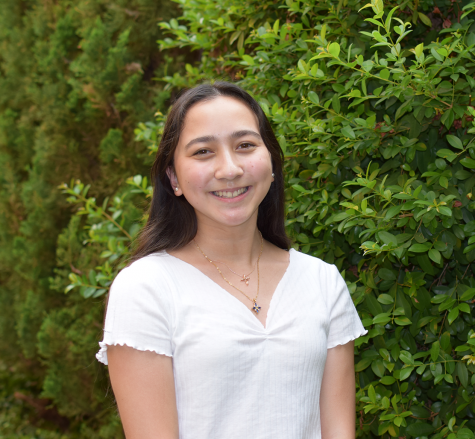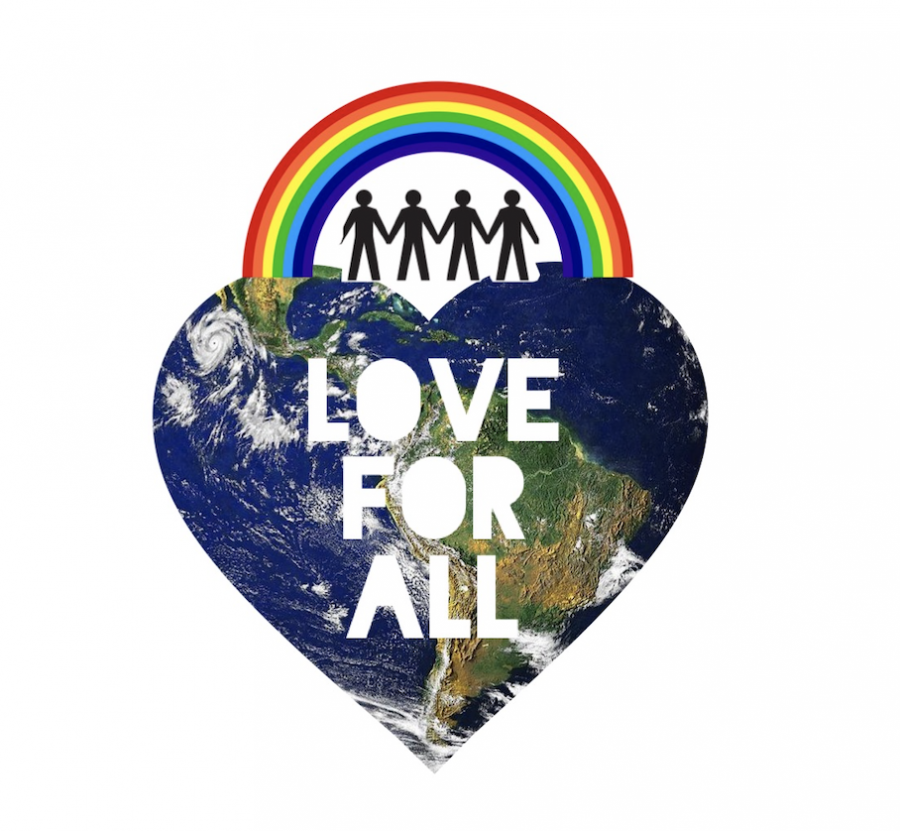NGO Projects Go Digital
Drew Valentino ’22. Made with Pic Collage.
The logo for the NGO developed by Drew Valentino ’22 that focuses on helping members of the LGBTQ+ community who face heavy discrimination, enduring acts of hate crimes especially in the country of Nigeria.
Logos in hand, and cameras ready to record, sophomores prepare to pitch their NGO projects. As the virtual school year comes to a close, the sophomore cubs are working diligently on the final phase of their NGO Project, hoping to solve a current global issue. As a yearlong endeavor, the NGO project involves students in researching and presenting a pressing issue that they are passionate about along with a solution to the problem in the form of a Non-Governmental Organization.
In the first phase of the project, students focus on brainstorming topics for research, conducting interviews with experts in the broader community, and furthering their research. Contrary to previous NGO projects over the years which have focused on any worldwide issue, the sophomore class was instructed to focus on an issue faced by women in the developing world. Topics include maternal mortality, women’s role in the climate crisis, women’s education, and sex trafficking. As the 10th grade cubs begin to choose their topics for research, they reach out to organizations and individuals around the globe who are connected with their chosen topic and conduct interviews to gather more information.
The second phase of the project features the presentation of all the research students have compiled during the first phase in the form of a research paper. The sophomores first form a developed research question which they then answer through their thesis statement and paper. Throughout the entire process, the sophomores document their progress and research through a blog which they update regularly with information on their chosen topic, their research question, thesis, and reflection videos.
The third and final phase of the project is the development of the NGO. Students use their research and the design thinking process to create an organization that aims to solve their chosen issue. They must also come up with an original title and their own logo for their organization. Usually, these NGOs would be presented at a school-wide NGO Night in front of a live audience. However, as the Mayfield community is unable to gather together on campus right now, the third phase of the NGO Project has been made virtual through FlipGrid. The sophomore students are currently pitching their NGOs in front of a camera and their recorded videos will be uploaded to FlipGrid where the class can view and comment on eachother’s videos.
Students express a few of the drawbacks of not being able to present their NGOs in front of an audience:
“I think it would’ve been a better experience to gather feedback from a live audience and interact with others to explain our project but I think the payoff of having finished the project will have the same effect with the amount of work we’ve put into it,” said Drew Valentino ‘22.
“The virtual project will be easier but that probably means that we won’t get as much out of it,” said Le Anh Metzger ‘22. “The project as a whole was a lot of work but I learned a lot.”
Despite the need for the final phase of the project to be done digitally, the sophomore cubs are looking forward to seeing the hard work and the innovative solutions that their classmates have initiated.

Hannah is a senior at Mayfield Senior School and is thrilled to be a part of The Mayfield Crier staff for her fourth year as Online Editor in Chief. Hannah...


